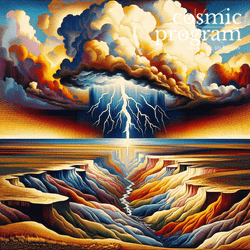
Photo Attribution: wikipedia commons
April 2024 Total Solar Eclipse/ Saros 139
This example has been viewed 665x times
Summary
Rodden Rating
Analysis for April 2024 Total Solar Eclipse/ Saros 139
Biography
A total solar eclipse will take place at the Moon's ascending node on Monday, April 8, 2024, visible across North America and dubbed the Great North American Eclipse (also Great American Total Solar Eclipse and Great American Eclipse) by some media.[1][2][3] A solar eclipse occurs when the Moon passes between Earth and the Sun, thereby obscuring the image of the Sun for a viewer on Earth. A total solar eclipse occurs when the Moon's apparent diameter is larger than the Sun's, blocking all direct sunlight, turning day into darkness. Totality occurs only in a narrow path across Earth's surface, with the partial solar eclipse visible over a surrounding region thousands of kilometres wide.
Occurring only one day after perigee (perigee on Sunday, April 7, 2024), the Moon's apparent diameter will be 5.5% larger than average. With a magnitude of 1.0566, its longest duration of totality will be of 4 minutes and 28.13 seconds near the Mexican town of Nazas, Durango, (about 4 mi (6 km) north), and the nearby city of Torreón, Coahuila.
This eclipse will be the first total solar eclipse to be visible in the provinces of Canada since February 26, 1979,[4][5] the first in Mexico since July 11, 1991,[6] and the first in the United States since August 21, 2017. It will be the only total solar eclipse in the 21st century where totality will be visible in Mexico, the U.S., and Canada.[7] It will also be the last total solar eclipse visible in the contiguous United States until August 23, 2044.
The final solar eclipse of the year will occur six months later, on October 2, 2024.
Source: https://en.wikipedia.org/wiki/Solar_eclipse_of_April_8,_2024
Raw Data
Horoscope Data
Comments
Natal Data
2024-04-08 15:20:00 LMT
38° 54′ 25.9″ N 77° 2′ 12.7″ W
Washington, DC, USA















































.png?bossToken=2cd26c26dc1401d24d0cd8cd2593c31481df5775bcf6b0b707c7673052dba093)


.png?bossToken=38a743240e8a3cc7c52e69394251de8e54c339b04681e2fec382688e83517c48)


_(1).jpg?bossToken=312dea488e9a159bacab5457170357e53b02ab6b3217b04b6adad6475632241d)





